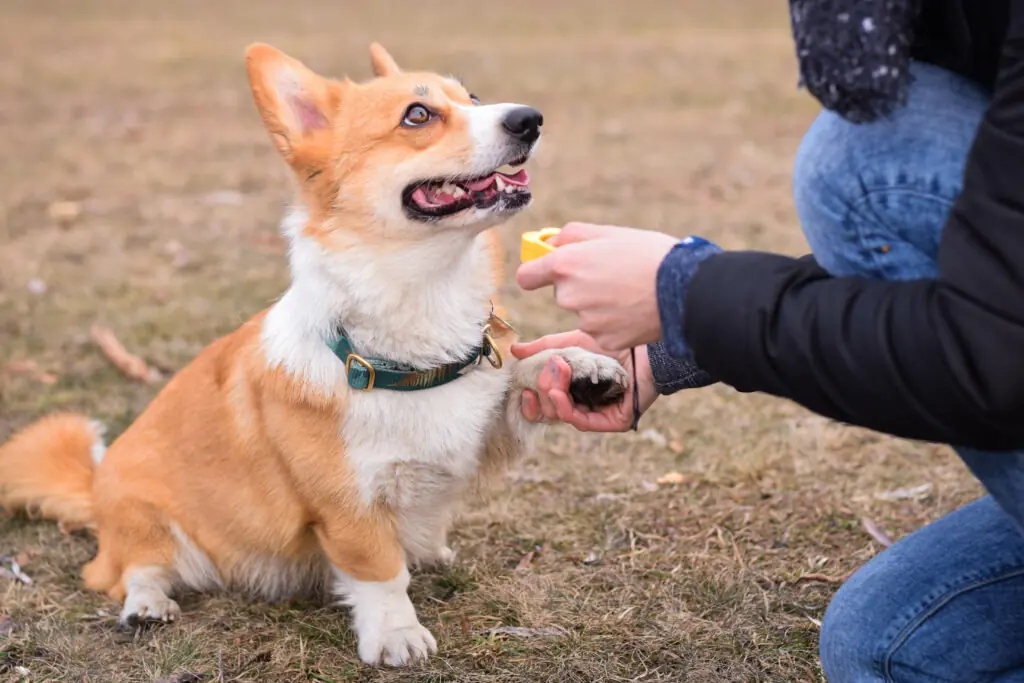
If you’ve ever given your dog a treat for sitting on command or praised them for coming when called, congratulations, you’ve used positive reinforcement!
This humane and science-backed training method is all about rewarding behaviours you want to see more of, making training a fun and stress-free experience for both you and your furry friend.
Let’s explore how it works and why it’s so effective.
How Positive Reinforcement Works
Positive reinforcement works by creating a strong association between a specific behaviour and a positive outcome. When a dog receives a reward immediately after doing something good, their brain links the two events. Clever, right?
This in turn makes the behaviour more likely to be repeated in the future.
For example, if your dog sits and is instantly rewarded with a treat, their brain registers sitting as a behaviour that leads to something good. Over time, this positive association will encourage them to sit more often, even without a reward!
The reward you choose can be anything from delicious Pointer treats (that would be our recommendation!), to fun toys to praise, petting, or access to special activities your pup loves. The secret is to find what makes your dog’s tail wag – every pup has their own unique personality and knowing what they truly enjoy will make all the difference in seeing great results.
The Benefits of Positive Reinforcement
- Strengthens bond: Using positive reinforcement helps build trust and creates a stronger, loving connection between you and your dog.
- Encourages confidence: When your dog’s actions are met with rewards instead of punishment, they will start to think more independently and grow more confident in themselves.
- Reduces stress: Training with positive reinforcement eliminates fear and anxiety, creating a safe and encouraging learning environment.
- Long-term success: Dogs who are trained with rewards are more likely to remember what they’ve learned because they associate training with fun and fulfilment, making the lessons stick.
The Core Principles of Positive Training
Positive training isn’t just about handing out treats – though that’s definitely a perk! – it’s a structured approach that prioritises understanding and respect. The four pillars of positive training include:
- Understanding your dog’s perspective: Dogs experience the world through their senses, emotions, and instincts. Understanding how your dog perceives their environment – what excites them, what scares them, and what motivates them, can guide your training efforts.
- Meeting your dog’s needs: Positive training doesn’t just focus on teaching your dog commands – it’s also about meeting their inherent needs. This means providing an outlet for physical exercise, mental stimulation, social interaction, or opportunities for your dog to express themselves in appropriate ways.
- Using positive training methods: Reinforce good behaviours while addressing undesirable ones through redirection, rather than punishment. If your dog is jumping on the furniture, you might redirect them to a designated spot, like their bed, and reward them for staying there. This approach helps your dog learn what’s expected of them without feeling anxious or fearful.
- Avoiding fear & punishment: Positive training emphasises that training should always be kind, supportive, and free of fear or intimidation. Using punishment-based methods such as physical correction, yelling, or dominance techniques can harm the bond between you and your dog, leading to fear, anxiety, and confusion.
Why Choose Positive Reinforcement?
Many outdated training methods rely on punishment, intimidation, or force.
However, studies have shown that positive reinforcement is not only more ethical but also more effective in achieving long-term behavioural change. Dogs trained with rewards are happier, more secure, and better adjusted to living in a human environment.
By using rewards to reinforce desired behaviours, you create a lasting foundation of trust and mutual respect. This method not only ensures good behaviour but also fosters a deep and rewarding relationship between you and your furry companion.
We’d love to hear about your experiences with dog training! Share your stories with us on Instagram or Facebook. For more training tips and tricks, visit our blog.

